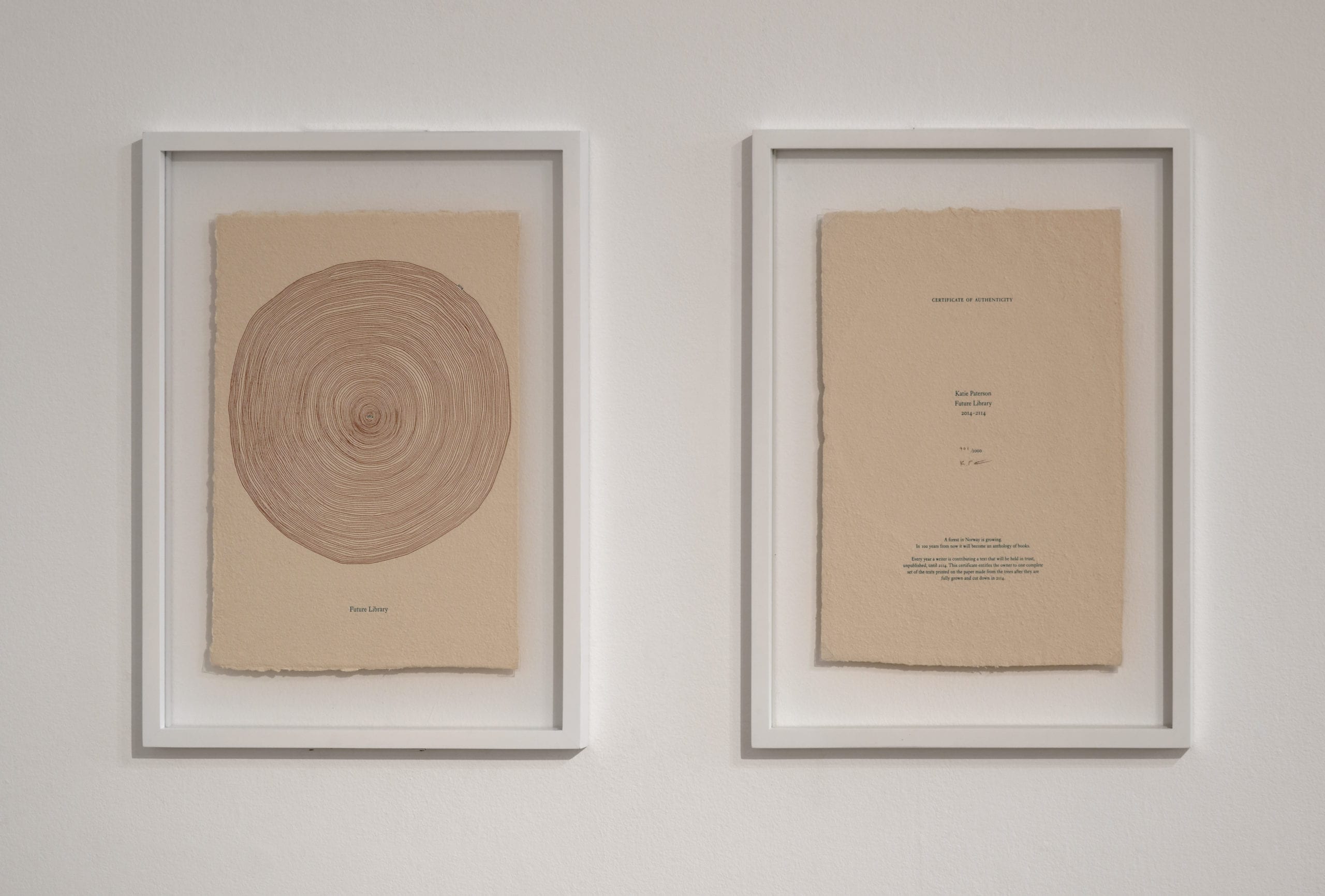On the outskirts of Oslo, Norway lies a forest. This is not your typical forest.
The trees that are growing there have a special purpose: to supply paper for an anthology of books to be printed in 100 years.
The Future Library project was conceived by Scottish artist Katie Paterson in 2014. While the scope of the project is incredibly broad, the idea for it started out very simple.
“It began as a scribble on a notebook…making a visual connection between the rings of a tree and the pages of a book,” says Paterson.
She imagined a book emerging out of a tree, extending out to a whole forest that would grow an anthology of books to be written but not published for 100 years.
Every year, a new author would write and contribute a manuscript, to be held in secret until the year 2114.

An ambitious project
The idea, while ambitious, is not outside of Paterson’s wheelhouse. She’s an artist who has become known for her grand creative pursuits.
She submerged a microphone in an Icelandic glacier to broadcast the sounds of it melting, mapped the dead stars across the universe and propelled a meteorite back into space.
When the idea for the Future Library first came to her, Paterson thought it would be impossible to realise. “Amazingly an opportunity came up in Norway to propose an artwork for commission,” she says. “Bit by bit, they eventually agreed.”
From there, Paterson and her team found a forest north of Oslo in the Heggehullet region, and worked with foresters to plant 1,000 trees. When it came to inviting authors on board, Margaret Atwood was Paterson’s first choice.
“Margaret Atwood’s response was really wonderful, she got it really quickly,” she recalls. “She compared it to being asked to donate a kidney! Luckily she said yes.”

Welcoming world-class writers
Following Atwood’s donated manuscript in 2014, six writers have contributed to the project – including British novelist, David Mitchell, Icelandic poet Sjón and South Korean writer Han Kang.
The handing over of the secret manuscript is treated like a sacred ceremony. “The author brings a physical manuscript and we take a walk together,” explains Paterson.
Anyone can join the ceremony which usually happens in spring (this year it has been postponed due to the coronavirus).
“We walk into the forest together, everyone sits down and there’s a bonfire and hot drinks. Then the author reads (not from the secret manuscript, of course) whatever they choose. That’s the last anybody sees of [the manuscript], it gets locked away after that until the trees are fully grown.”
Evolving like nature
For Paterson, the natural world is often a centrepiece for her work. For the Future Library project this is especially so.
Like nature, she’s seen the project adapt, evolve and respond to the changing world.
“In the beginning, the first idea was very material in its thinking of trees, nature, time, words and connecting voices across time. Yes, ecology, but the large sense of it, as parts connecting to a whole,” she says.
“As years have passed, it’s become more and more crucial to connect yourselves to climate change. The project speaks to that element because it is about the people that are going to live after us and the kind of place we’re going to be leaving behind for them.”

A gift for future generations
This concept of leaving something for the future has occupied Paterson’s mind since the project was first sketched onto paper.
After putting all this time into the project, how does she feel about the fact that she won’t be alive to see its completion?
“I reckoned with it right from the start that I wouldn’t be here to see it through,” she says. “What I do really struggle with is that most people I know will also be gone. That’s really difficult to have that picture in my mind.”
Despite this, she celebrates the fact that it’s a project designed to outlive most people. “The core of it is about leaving something for a different generation,” she says. “Something that is like a gift rather than the usual destruction we see.”
The Future Library’s manuscripts will be held in a specially built room in the New Deichmanske Library, opening this year in Oslo. Authors’ names and titles of their works will be on display, but none of the manuscripts will be available for reading until the year 2114. Visit futurelibrary.no to learn more.



